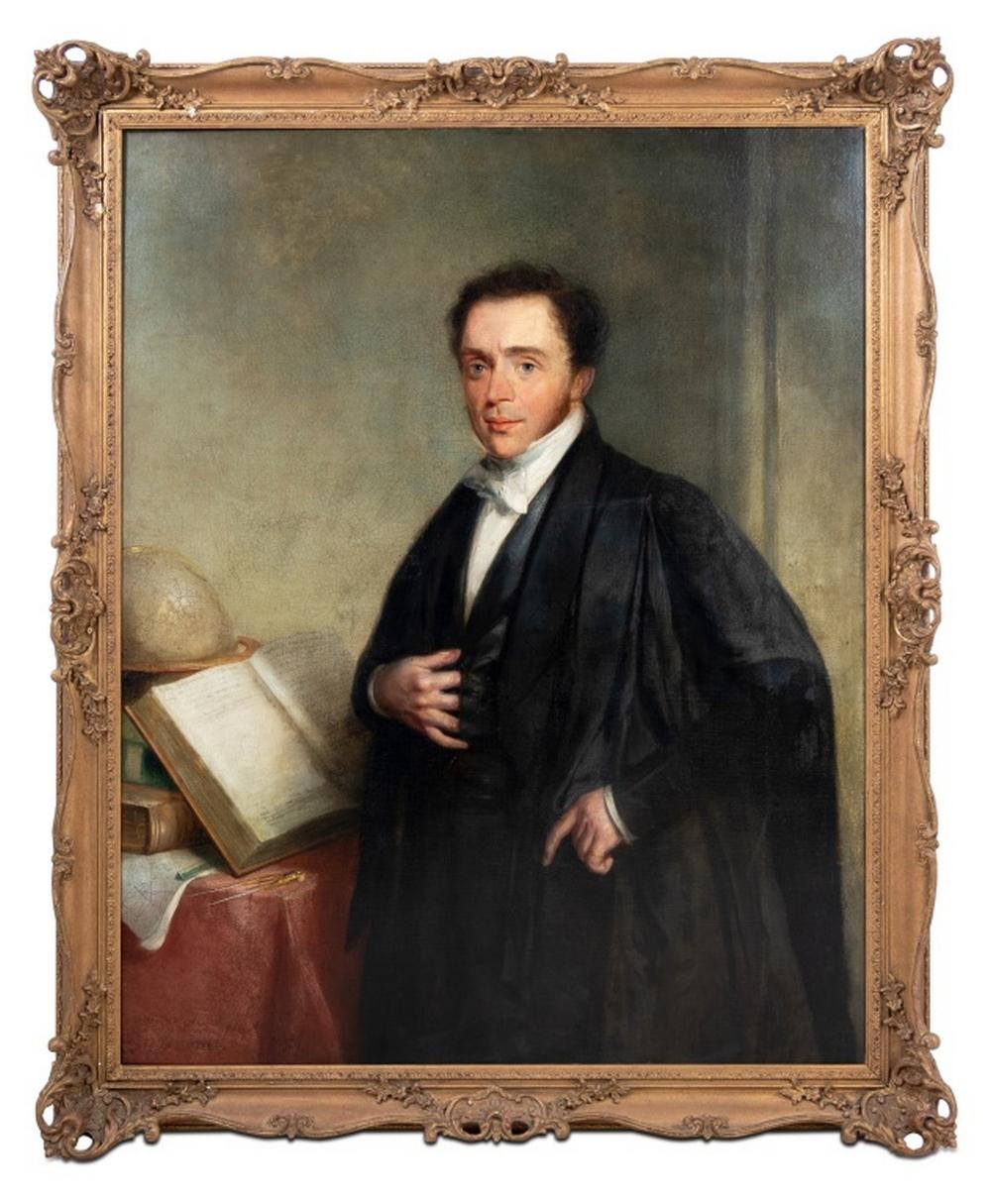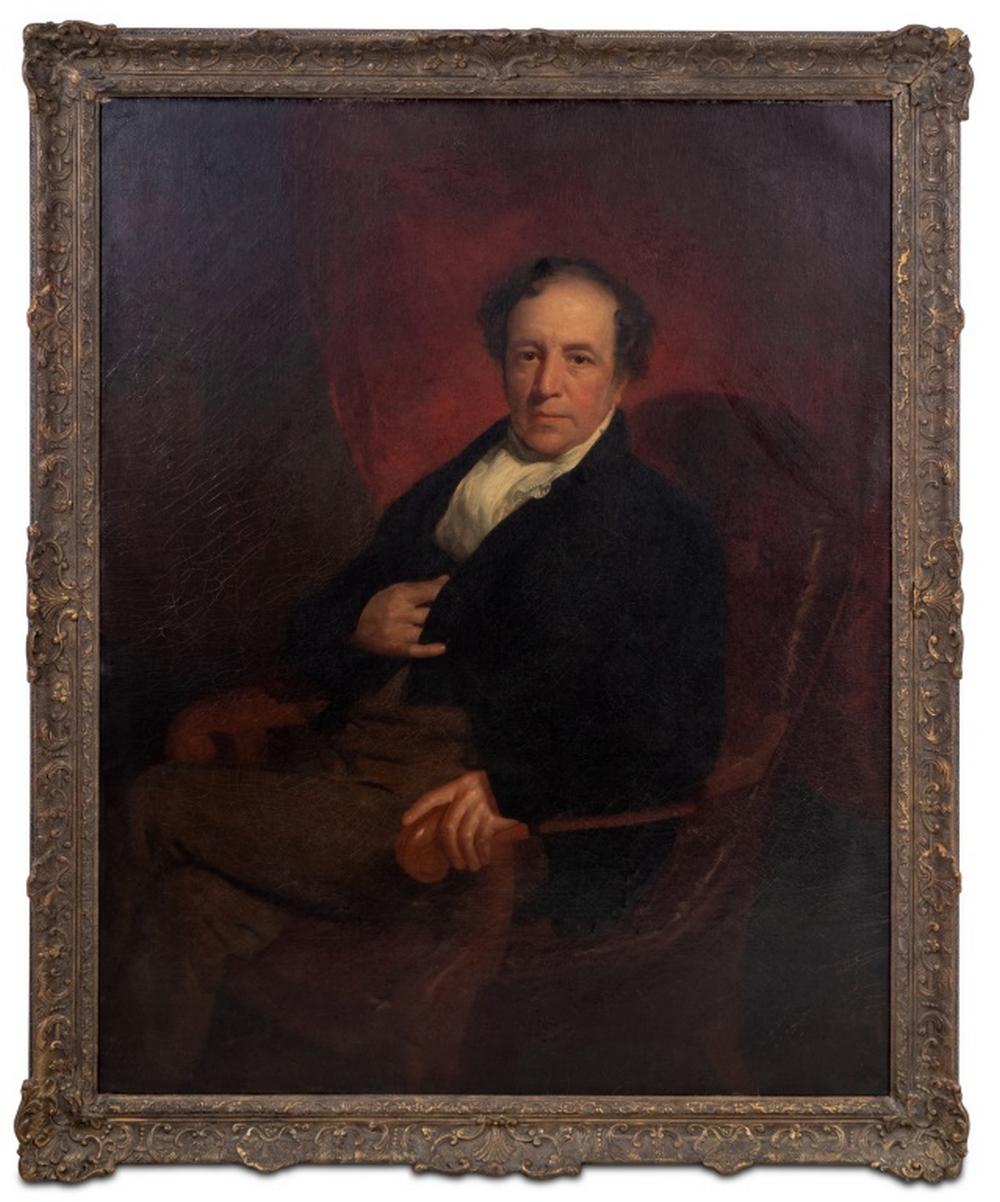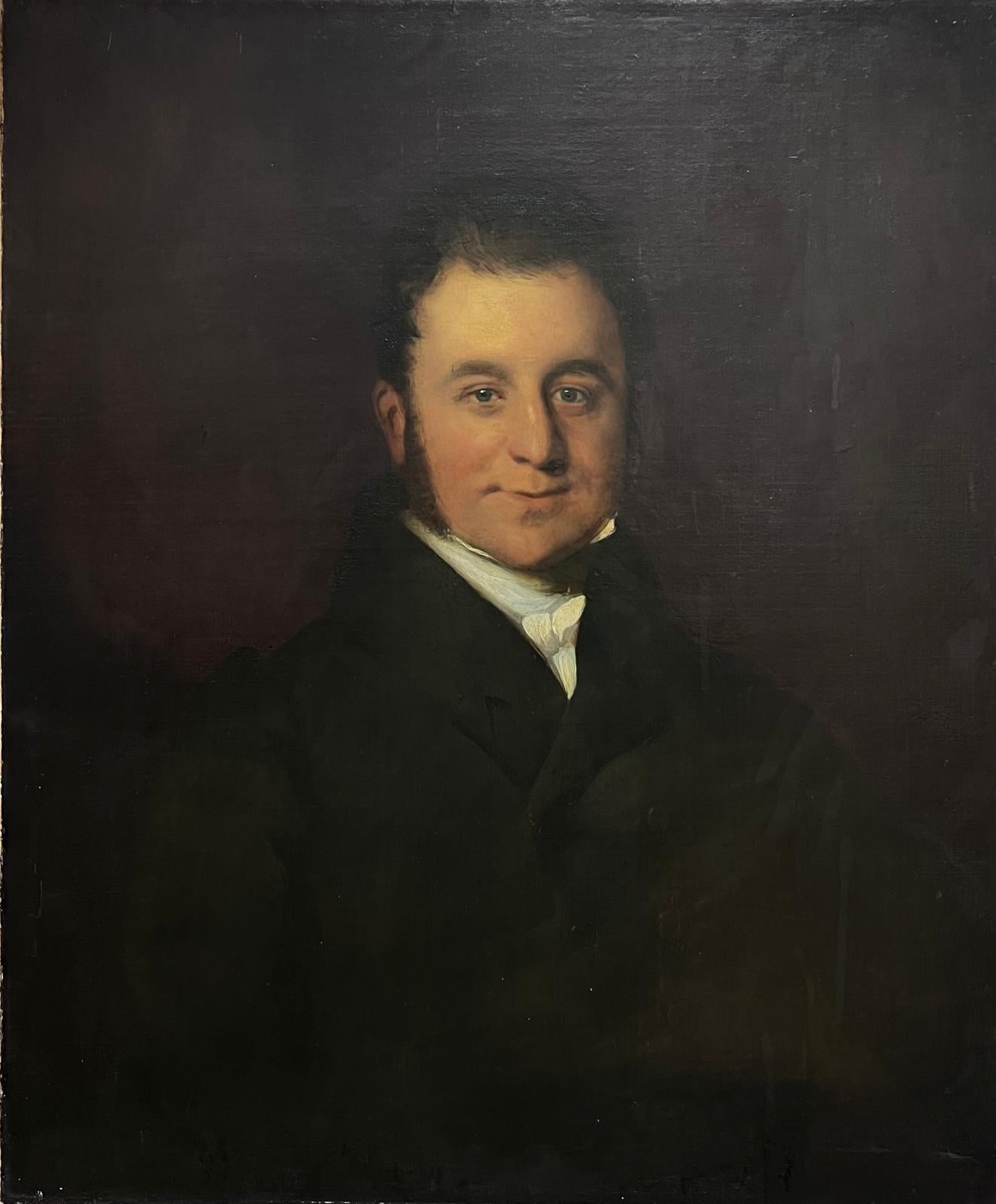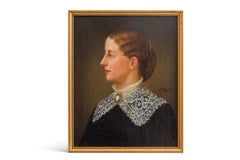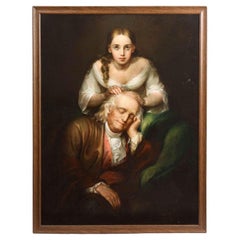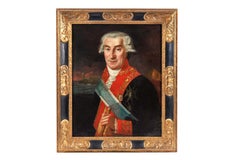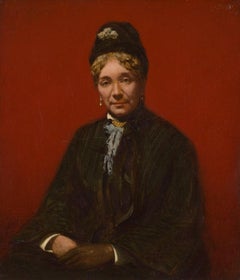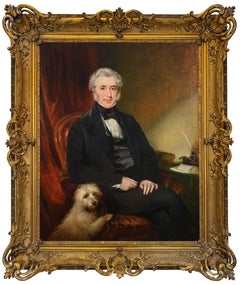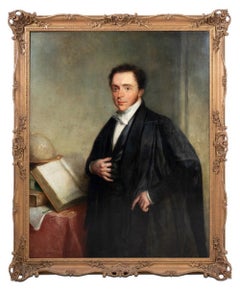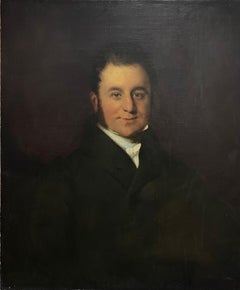Items Similar to English School, A Rare Portrait of John Scott Russell and "The Great Eastern"
Want more images or videos?
Request additional images or videos from the seller
1 of 20
UnknownEnglish School, A Rare Portrait of John Scott Russell and "The Great Eastern"19th Century
19th Century
$98,000
£74,399.93
€85,097.65
CA$136,920.21
A$152,285.16
CHF 79,518.58
MX$1,853,148.44
NOK 1,015,573.61
SEK 952,428.88
DKK 635,116.35
Shipping
Retrieving quote...The 1stDibs Promise:
Authenticity Guarantee,
Money-Back Guarantee,
24-Hour Cancellation
About the Item
English School, A Rare Historical and Important Portrait Painting of John Scott Russell and "The Great Eastern",
(19th Century)
Oil on canvas, in a period hardwood frame.
John Scott Russell of Scotland (1808-1882) was one of the great marine engineers of the 19th century. In 1858 he launched the Great Eastern, (depicted here in this painting) then the world's largest ship, which would make history by laying the first transatlantic telegraph cable.
He was one of the most distinguished naval architects of the 19th century. He made a study of the nature of waves for which he received widespread acclaim and recognition. He designed and built the wave - the first vessel constructed on the wave system - prior to establishing his own yard on the Thames which produces many steamships, most notably Brunel's ill-fated monster, The Great Eastern, as well as the worlds first successful ironclad warship H.M.S. Warrior. One time secretary of the society of arts, Russell was also one of the royal commissioners for the 1851 Great Exhibition, One of the Founders of The Institute Of Naval Architects and a prolific author of technical works of Shipbuilding.
In short, John Scott Russell was a Scottish civil engineer, naval architect and shipbuilder who built Great Eastern in collaboration with Isambard Kingdom Brunel. He made the discovery of the wave of translation that gave birth to the modern study of solitons, and developed the wave-line system of ship construction.
Provenance:
Caelt Gallery, London
Christie's, Maritime and Naval Battles, London, October 31, 2001 (Sale 9240, Lot 491)
Private Collection, Charleston, South Carolina
Canvas: 42" high x 52" wide
Frame: 48" high x 58" wide
Very good condition, no damages noted. Ready to hang. A truly magnificent painting.
- Creation Year:19th Century
- Dimensions:Height: 48 in (121.92 cm)Width: 58 in (147.32 cm)
- Medium:
- Period:
- Condition:
- Gallery Location:Queens, NY
- Reference Number:1stDibs: LU1151213785272
About the Seller
5.0
Vetted Professional Seller
Every seller passes strict standards for authenticity and reliability
Established in 1980
1stDibs seller since 2019
14 sales on 1stDibs
Typical response time: 5 hours
- ShippingRetrieving quote...Shipping from: Queens, NY
- Return Policy
Authenticity Guarantee
In the unlikely event there’s an issue with an item’s authenticity, contact us within 1 year for a full refund. DetailsMoney-Back Guarantee
If your item is not as described, is damaged in transit, or does not arrive, contact us within 7 days for a full refund. Details24-Hour Cancellation
You have a 24-hour grace period in which to reconsider your purchase, with no questions asked.Vetted Professional Sellers
Our world-class sellers must adhere to strict standards for service and quality, maintaining the integrity of our listings.Price-Match Guarantee
If you find that a seller listed the same item for a lower price elsewhere, we’ll match it.Trusted Global Delivery
Our best-in-class carrier network provides specialized shipping options worldwide, including custom delivery.More From This Seller
View AllJulian Scott American, (1846-1901) A Portrait of Isabella Penn Smith Fleming
Located in Queens, NY
Julian Scott (American, 1846-1901) An Oil on Canvas Portrait Painting of Isabella Penn Smith Fleming, circa 1883.
Signed Julian Scott and dated 1883, cen...
Category
19th Century Portrait Paintings
Materials
Oil
Lilly Martin Spencer (American, 1822-1902) God Bless My Father Portrait Painting
By Lilly Martin Spencer
Located in Queens, NY
Lilly Martin Spencer (American, 1822-1902) A Rare Portrait God Bless My Father.
**Figure 84 from principal book/catalogue on Lilly Martin Spencer.
19th Century.
Oil on canvas, signed
Lilly Martin Spencer was one of the most popular and American female genre painters in the mid-nineteenth century. She primarily painted domestic scenes, paintings of women and children...
Category
19th Century Academic Portrait Paintings
Materials
Oil
Spanish School (18th Century), A Rare Portrait of Juan Procopio de Bassecourt
Located in Queens, NY
Spanish School (18th Century), A Rare Portrait of Juan Procopio de Bassecourt, count of Santa Clara, governor of the island of Cuba between December 1796 and May 1799. The lighthouse...
Category
18th Century Portrait Paintings
Materials
Oil
A Rare Portrait Of Mrs. Sanford Robinson Gifford (Mary Cecelia Gifford), 1878
By Sanford Robinson Gifford
Located in Queens, NY
Sanford Robinson Gifford (American 1823-1880)
A Rare Portrait Of Mrs. Sanford Robinson Gifford (Mary Cecelia Gifford)
"The Artist's Wife"
Oil on Paper mounted on canvas, painted in 1878, 2 years before his death.
In original giltwood frame.
Painting: 8 1/4" high by 7 1/4" wide
Frame: 15" high x 13.5" wide
Provenance:
Private Collection (acquired by descent directly from the artist in 1878)
Alexander Gallery, New York (acquired from the above)
Acquired from the above in 1986 by the present owner
The Art Institute of Chicago (Reference Number
1986.184)
New York, Private Collection
Literature:
Ila Weiss, The Poetic Landscape: The Art and Experience of Sanford R. Gifford, Newark, 1987, no. 10, p. 309, illustrated
The Art Institute of Chicago, letter from Milo Naeve to Mr. and Mrs. William Y...
Category
19th Century Portrait Paintings
Materials
Oil
An Exceptional Quality Orientalist Portrait of "A Moorish Chief"
Located in Queens, NY
An Exceptional Quality Orientalist Portrait of "A Moorish Chief from Algeria", circa 1880.
Oil on canvas painting depicting a Moorish chief / gu...
Category
19th Century Portrait Paintings
Materials
Oil
Kipp Soldwedel Operation Sail New York Harbor Oil Painting
By Kipp Soldwedel
Located in Queens, NY
Kipp Soldwedel (American 1913-1999) "Operation Sail" oil on canvas
Very rare painting depicting the arrival of all tall ships taking part of the New York Harbor Event in 1964 and Celebrating the Birth of America. Framed with brass nameplates for all the vessels / ships. President John F. Kennedy coined the name for the event. The name 'Operation Sail', was to be used again in 1976, 1989, 1992 & 2000. The painting is a water-level view of the International fleet, USS Forrestal aircraft carrier in background, and Statue of Liberty to the right.
This was painted in 1976. Signed lower right. Verso signed, inscribed with artist's copyrights and dedicated lower right.
Please note this painting hung in the Rotunda of the Statue of Liberty Monument on Liberty Island, New York Harbor on July 4, 1988.
Without frame measuring 48" high by 70" wide.
With frame: 58" high x 80" wide
Marine artist Kipp Soldwedel studied fine arts at Yale University and was awarded four Beaux Arts medals. He received a scholarship to the American Academy in Rome. During World War II, he was a flight instructor and meteorologist for the United States Air Force. Kipp Soldwedel is most well known for his maritime battle scenes though he did paint over 150 portraits of celebrities. His illustrations appeared in magazines such as National Geographic, Time, Life, and Town and Country. Many of his paintings depicted the tall ships. He was the known as one of the greatest modren masters of Marine Paintings. 1964 The first Operation Sail event, a tie-in with the New York World's Fair, brought tall ships from around the world to New York Harbor for a grand parade of sail up the Hudson, led by the USCGC Eagle as the host ship. Many of the vessels raced from Plymouth, England, to Lisbon, Portugal, before setting off on a 3,000-mile transatlantic journey to Bermuda and then a 630-mile northwest run to New York. The event also featured lifeboat races, a ticker-tape parade up Broadway honoring seamen of every participating nation, and two grand balls. Mayor Robert Wagner proclaimed that week in July to be "Operation Sail Week," and Secretary of...
Category
20th Century Landscape Paintings
Materials
Oil
You May Also Like
Important Victorian portrait of Alexander Smith
Located in New York, NY
Important Victorian painting depicting Alexander Smith. It has a fantastic frame and is in excellent condition. Written Alex Smith (...) on the letter.
Category
Mid-19th Century Victorian Portrait Paintings
Materials
Canvas, Oil
English School Portrait of a Scholar Oil on Canvas
Located in Astoria, NY
English School, Portrait of a Scholar, Oil on Canvas, early 19th century, signed indistinctly and dated lower left, ornate giltwood frame. Image: 51.25" H x 40.5" W; frame: 57" H x 4...
Category
Early 19th Century Academic Portrait Paintings
Materials
Canvas, Oil
English School Portrait of Gentleman Oil on Canvas
Located in Astoria, NY
English School, Portrait of a Gentleman, Oil on Canvas, circa 1830, the figure seated in an armchair, unsigned, according to a typed label verso depicting "Lord John H. Morelan(d)", ...
Category
1830s Portrait Paintings
Materials
Canvas, Oil
1830's British Oil Painting Large Portrait of a Distinguished Gentleman
Located in Cirencester, Gloucestershire
Portrait of an English Gentleman
English School, circa 1830's period
oil on canvas, unframed
Canvas: 30 x 24.5 inches
Provenance: Private collection, UK
Condition: relined canvas, ov...
Category
Early 19th Century English School Portrait Paintings
Materials
Oil, Canvas
19th century male portrait, painting
Located in San Francisco, CA
19th century male portrait, painting
Oil on canvas
No visible signature,
25 x 30 unframed
Category
19th Century Portrait Paintings
Materials
Canvas, Oil
Early 19th Century American Portrait of a Man
Located in Houston, TX
Early American oil portrait on canvas of a man seating wearing a suit holding a book. The painting has a signature in the bottom right corner as seen in the photographs. The painting's style is similar to American artist, William Matthew Prior, John Stanley, and John Brewster...
Category
Early 19th Century Naturalistic Figurative Paintings
Materials
Oil, Canvas
More Ways To Browse
1851 Great Exhibition
Antique Yard Art
Charleston Antique
Steamship Paintings
Maritime Antiques
Naval Battle Oil
Naval Battles Oil Painting
Oil Painting Steamship
Great Exhibition 1851
Antique Ships Telegraph
Transatlantic Cable
Lady Jane
Studio 54 Invitation
A Churchill Painting
Admiral Portrait
Old Abbey
Portraits Of Jewish Rabbis
English Civil War

